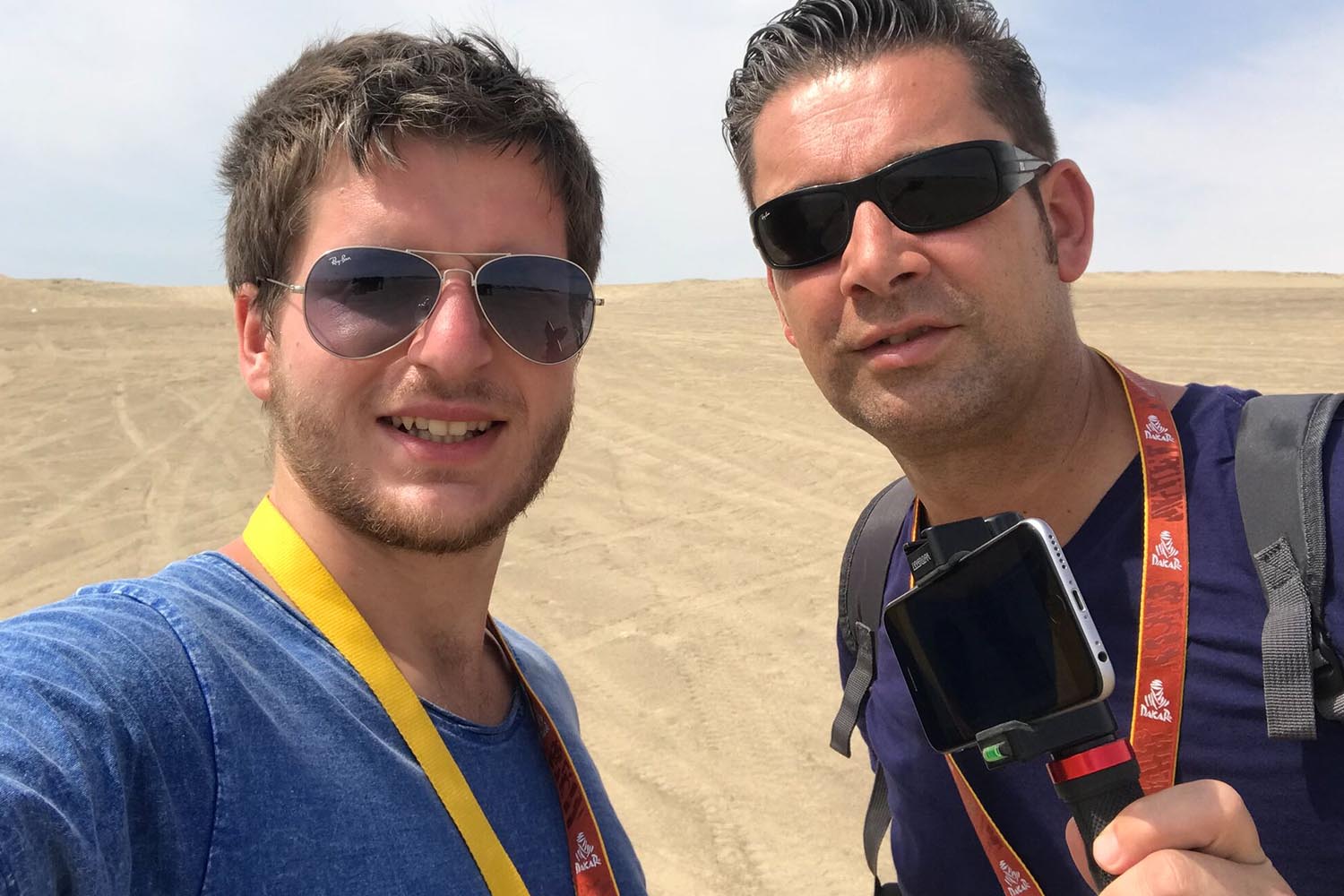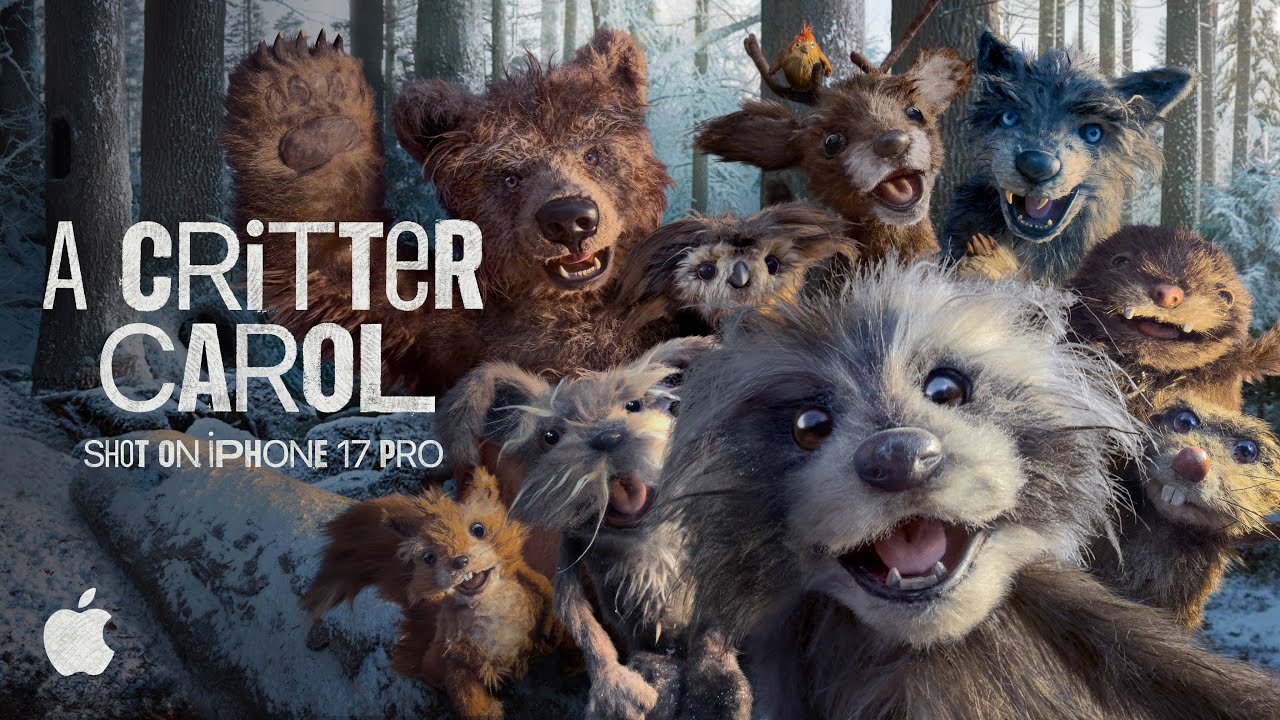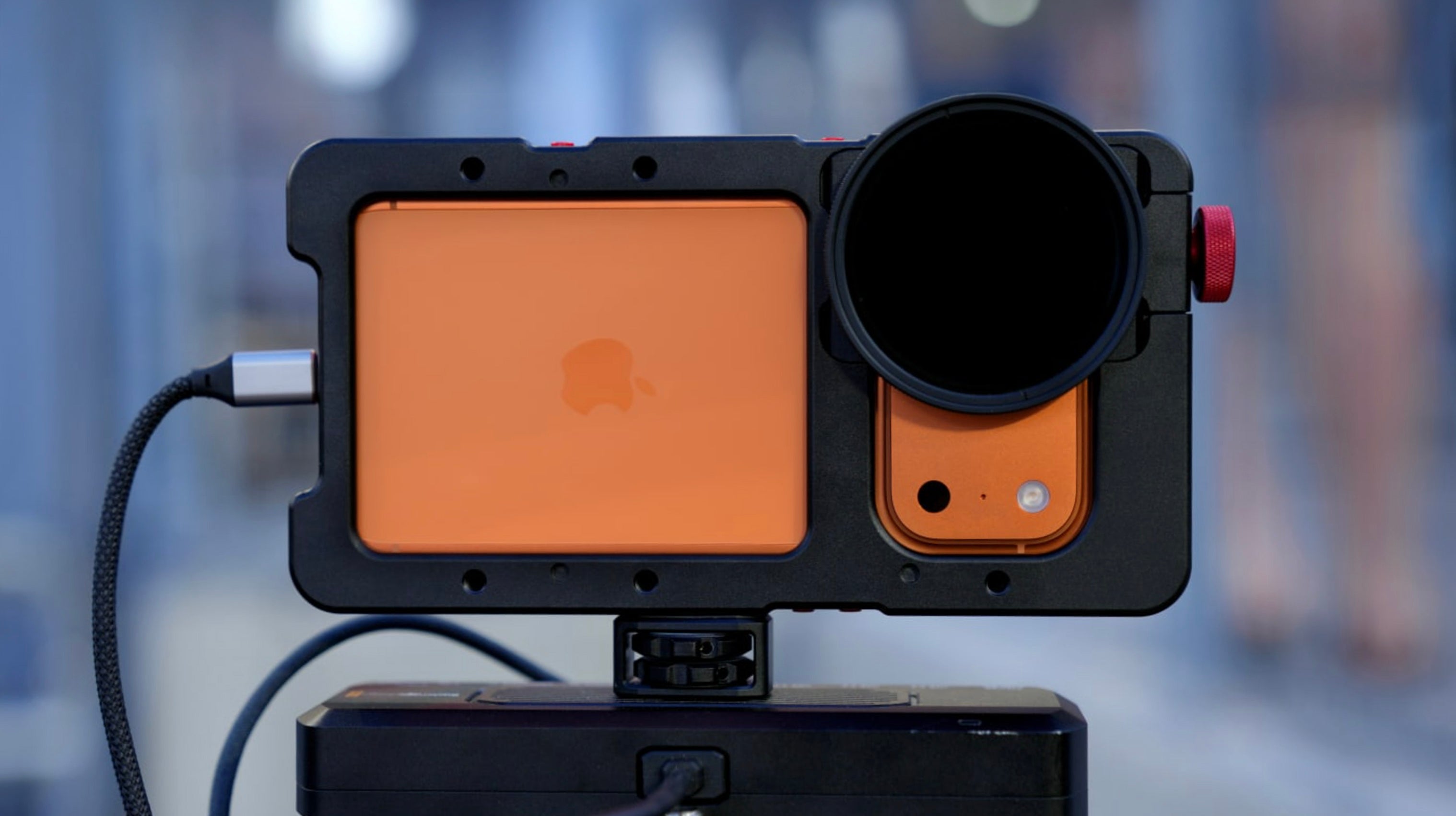Twan Spierts studied Journalism in Tilburg, Netherlands and started working as a web editor at Omroep Brabant and worked his way up to a reporter, which he's done for the past few years. He's interviewed a wide variety of people as a reporter, including famous soccer players, mayors, cabinet members and much more all on his phone.
He recently shot a full-length documentary titled De Dakar van Dollevoet using iPhones and the Beastgrip Pro with his colleague Ronald Sträter, which you can see below:
Tell us about your background in mobile journalism.
One day I had to go to a soccer match to film post-match interviews and all of the broadcast cameras were either in repair or being used by other reporters. My producer suggested that I hire a camera crew for the story - which at the time was about $300-400 euros for only 5 minutes of interview recording.
“I don’t have the exact percentage, but I’d say that about 30% of the content that we broadcast on TV is produced on smartphones and mobile journalists like myself use them about 70-90% of time.”
I decided to do it with my phone and a small tripod and light instead, and it worked out perfectly! We posted the finished video on the web and to this day no one has noticed that it was shot on a smartphone [laughs]. From that point on, I’ve been shooting most of my content on smartphones.

Twan filming a sports interview with the Beastgrip Pro.
What are some of the most important tips you have for mobile journalists shooting with their phones?
The most important things that you can do to dramatically improve your smartphone video quality is lock the exposure and focus, keep your movements stable [and to a minimum] and find a way to hold it comfortably - if you have access to one, using a professional phone grip like the Beastgrip Pro will also make a huge difference.
You also want to always keep a rig and tools with you if you can... but it’s important to know that even without tools you can capture great footage and share a beautiful story as long as you know the abilities and disabilities of your device.
For audio, I suggest using an external microphone such as the iRig or a lavalier or wireless microphone, especially when filming outside or in the wind. For editing, I prefer LumaFusion. It's is an amazing app that really saves me a lot of time and makes editing videos much easier.
“As a general rule, everything I shoot on my phone I edit on my phone…”
Always have a backup if you can [laughs]. You never know when something will not work - for whatever reason - and being prepared is critical when on the field.
And lastly, you should know that you’ll get a different story depending on the device that you use to record it, but the story always comes first and the technical side of things second.
That’s the philosophy that I do my best to teach. If you simply try to use your device well, you can get amazing results.

Twan filming another sports interview with the Beastgrip Pro.
How do you decide what stories will be shot with your phone [vs. a broadcast camera]?
Before I go out on the field, I plan out my day and decide what the best device is for the story that we’re telling. When speed is not important and I don’t need to be flexible, I’ll choose the broadcast camera, because it likely means that the absolute best possible quality is crucial for that situation and I can get a really nice shallow depth-of-field. My mentality is that although a larger broadcast camera will be better quality, about 90% of the time I prefer my phone because of how much faster and easier it is!
“On average, I’d say that I end up using our broadcast camera about once every month or so, and my phone for the rest.”
The turnaround speed of filming, creating a report, editing it and transferring it to the studio with my phone is much, much shorter - which is very critical in mobile journalism. It can sometimes take 2-3X longer to create, edit and share content with my professional camera since I have to drive to the studio, transfer all of the files to my computer to edit it, etc.

Thousands of people at the start of the Dakar Rally in Lima.
What challenges did you have transitioning from a larger setup to a mobile setup?
One challenge I have is with lighting in the early morning when it’s dark. I’ll always take a light with me and it works out well though so it’s usually not a big deal. But by far, my biggest challenge is that I don’t have a lot of optical zoom with my phone. For example, if I’m reporting about a fire and I can’t get physically close to the fire it can get very challenging to capture it up close to show how massive/intense it is.
Side note: At Beastgrip, we’re in the late stages of development for our Pro Series 3X Telephoto lens, which will be a perfect solution for capturing content from further away - stay tuned, and if you have any requests for new products, please contact us.
What kind of reaction do you get from people when you pull ot your phone rig and start shooting?
I’ve interviewed a wide variety of different people, from famous soccer players, mayors, cabinet and government members, etc. and no one has ever made a negative comment about it. The only people that ever scoff at my mobile setup are a few other journalists or cameramen with a bulky broadcast camera on their shoulder [laughs].
“One thing I hear a lot that is that ‘content you produce with the phone is not good enough quality to broadcast on television or replace footage shot with a professional camera’ - and that’s just flat out untrue in most cases.”
A great example of how people react is from this documentary, where we followed the Dollevoet team through Dakar. No one on the team was used to getting any media attention before and filming them with phones made it a lot easier and less frightening for them, since we weren't stumbling around with a large, intimidating camera... it was the same device that they have in their hands/pockets as well [laughs].

Ebert Dollevoet driving in the Dakar Rally. Photo credit: Daniel Curiel
How reliable has your phone been for you on the field?
For me, it’s been just as reliable as my broadcast camera. It’s also a lot easier, because as soon as something happens, I’m able to pull my phone out of my pocket and push record almost instantly. And when I have more time to set up, I’ll use FiLMiC Pro though and go a bit deeper into the settings.
I also always back up my footage to a hard drive and create a backup to that hard drive in case anything ever happens to my phone… and free up our storage on the phones so it runs leaner.
Conclusion
You can learn more about "De Dakar van Dollevoet" on Twan's behind the scenes blog post and another informative article about it on journalism.co.uk. BG






Share:
John Legend's "A Good Night" Music Video Shot with Google Pixel 2 and Beastgrip Pro
Interview with Director Mishka Kornai on John Legend's "A Good Night"